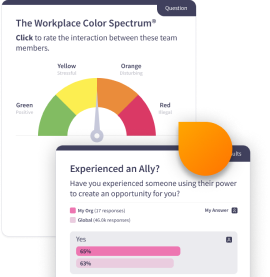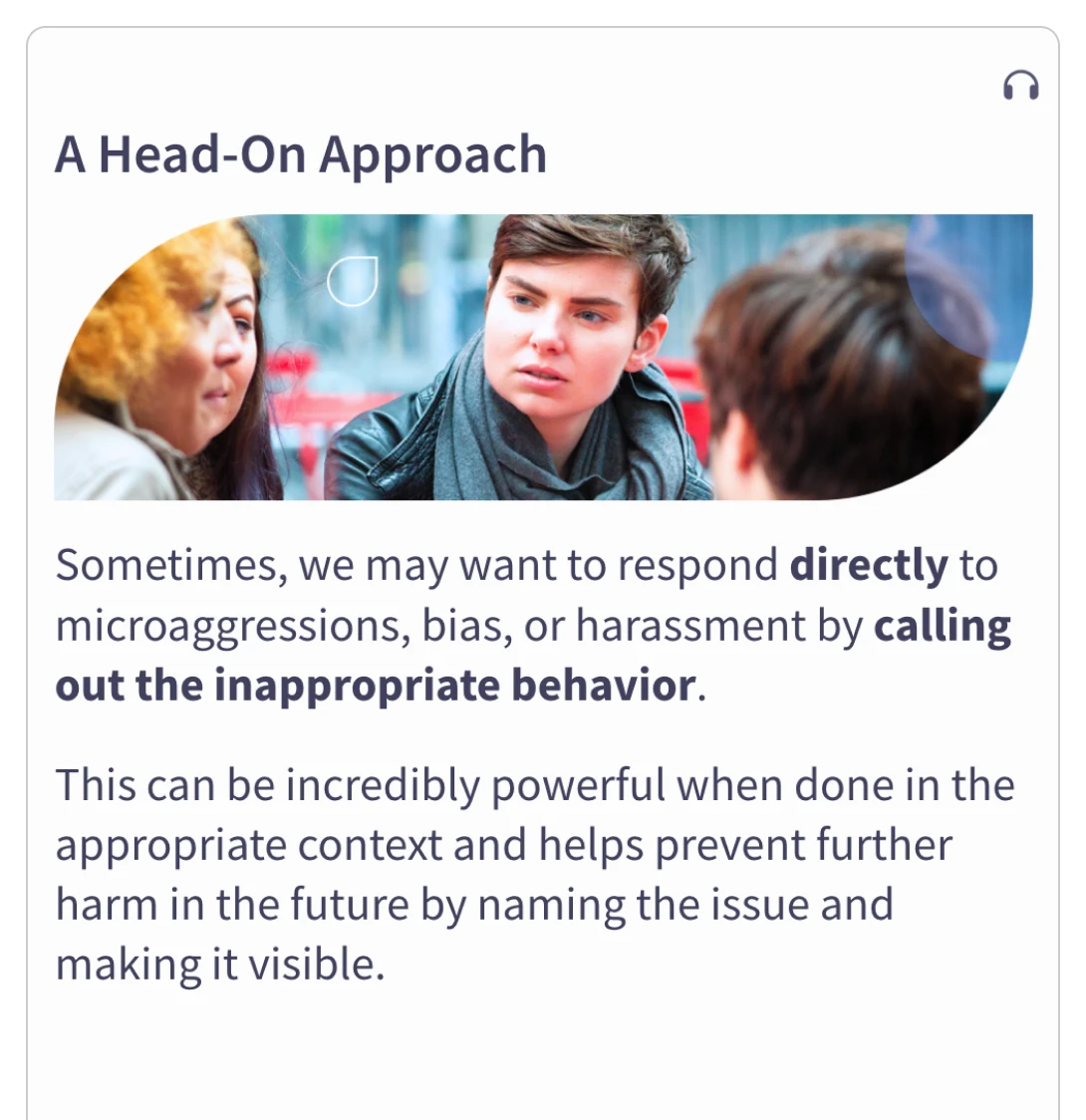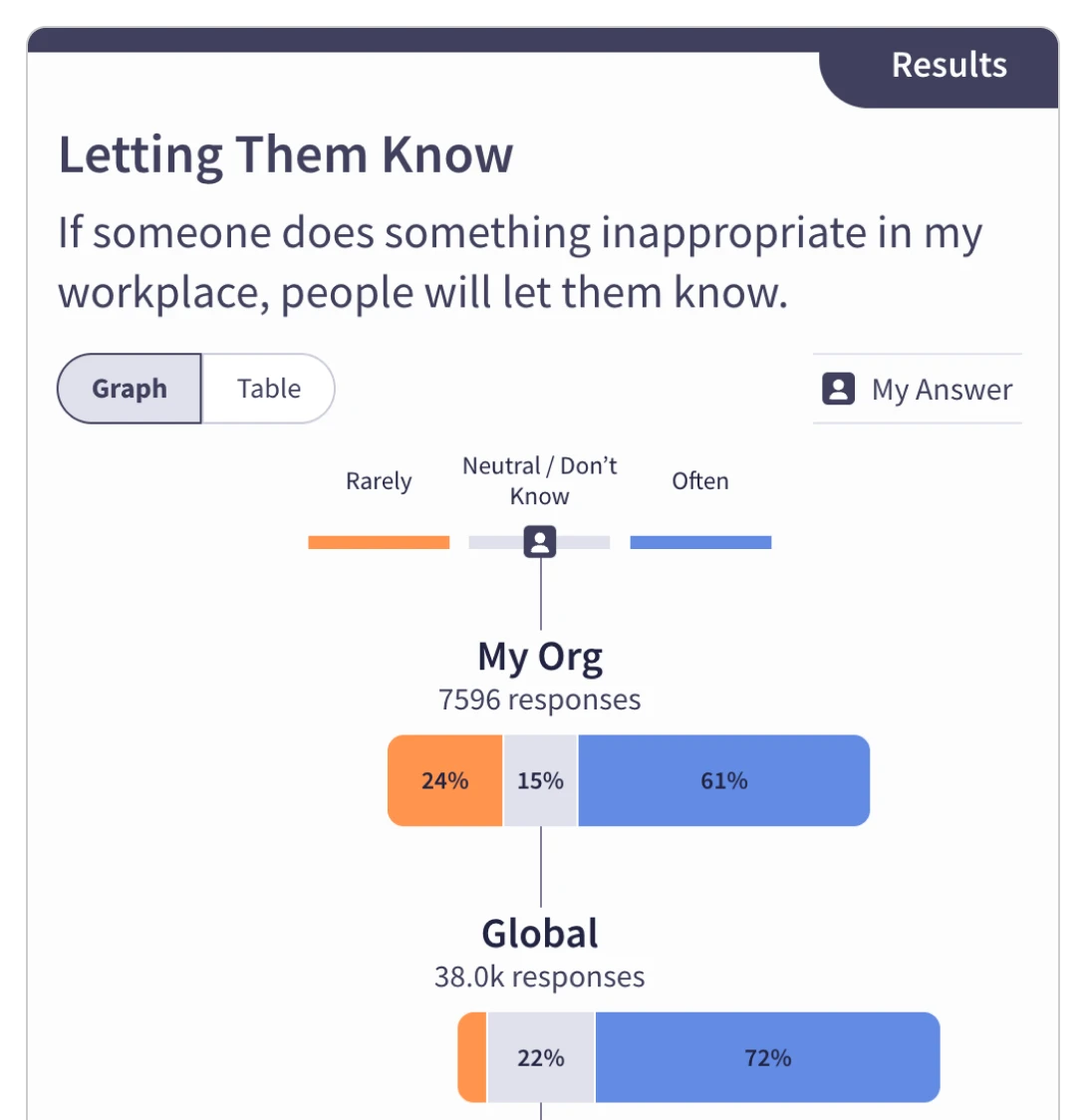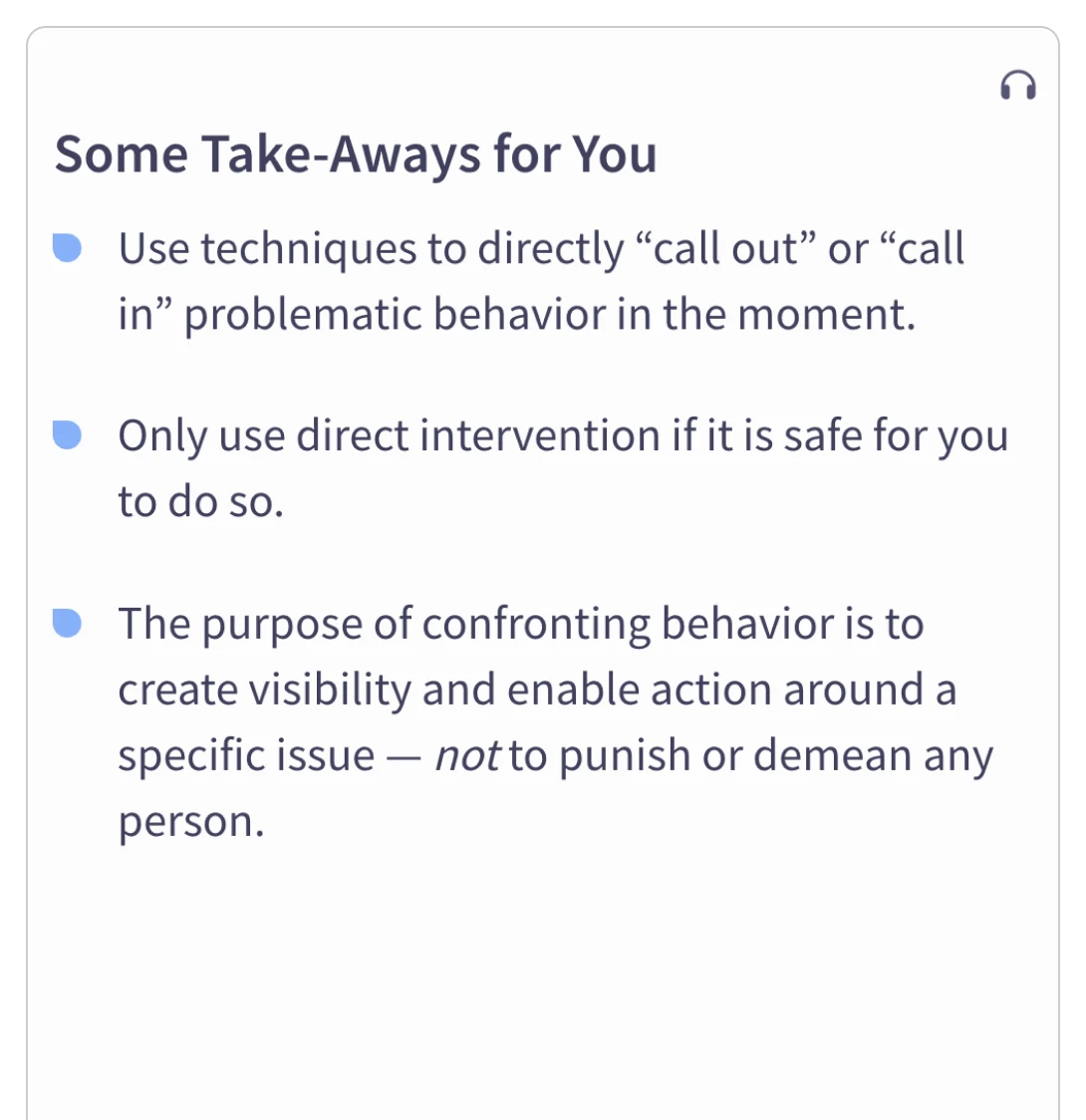
Speaking Up with Confidence: The Direct Method
The Direct method empowers employees to address inappropriate behavior in the moment—by clearly naming what’s wrong and asking for it to stop. This approach can involve “calling out” to stop harm immediately or “calling in” for a constructive conversation that promotes learning. Emtrain’s microlesson teaches when and how to speak up safely, use assertive yet respectful language, and turn difficult moments into opportunities for accountability and awareness.
Microlesson Description
This lesson reviews the upstander intervention technique, "Direct". Sometimes, we may want to respond directly to harassment by calling out the inappropriate behavior and/or confronting the person causing harm.
Key Concepts
- Learn when and how to respond directly in a conversation while maintaining respect and professionalism
- Understand the potential risks of direct intervention and how to ensure your own safety
- Recognize the difference between “calling out” harmful behavior and “calling in” for constructive dialogue
- Help others focus on the impact of their behavior—on individuals and workplace culture—rather than intent alone
This microlesson is part of Emtrain’s Intervention Methods microlesson series—five short, actionable lessons that teach employees how to recognize harm and respond constructively. These lessons are designed to make upstander intervention a workplace skill everyone can practice with confidence.
Each method provides a distinct approach for real-life application:
- Direct: Speak up respectfully to stop harm or start accountability conversations.
- Distract: Defuse tension and redirect attention to interrupt harm safely.
- Delegate: Enlist others—like managers or HR—to step in when direct action isn’t safe.
- Document: Record and report incidents accurately to support transparency and fairness.
- Delay: Offer empathy and follow-up support to colleagues who’ve been targeted.
Together, these microlessons help employees move from bystanders to upstanders—building a culture where everyone takes responsibility for respect, inclusion, and psychological safety.
Microlesson Features
- Employee sentiment pulsing questions that provide leaders with insights into their workforce's core cultural competencies
- Emtrain's Expert Answers tool, enabling employeees to submit anonymous questions about sensitive issues.
- Rich, contemporary video scences illustrating key concepts through realistic scenarios
- A data driven, skill-based approach to eLearning that establishes a shared language for employees.

When is it okay to respond directly?
It’s okay to respond directly when you feel safe and the situation calls for accountability. Speaking up about microaggressions, bias, or harassment helps name the behavior and make its impact visible. A direct, respectful response can stop harm, create awareness, and reinforce a culture of respect and inclusion.
Related Trainings
Frequently Asked Questions
Below are answers to common questions that employees and managers have about this topic. These FAQs provide a preview of what you’ll learn in this microlesson and why it matters.



